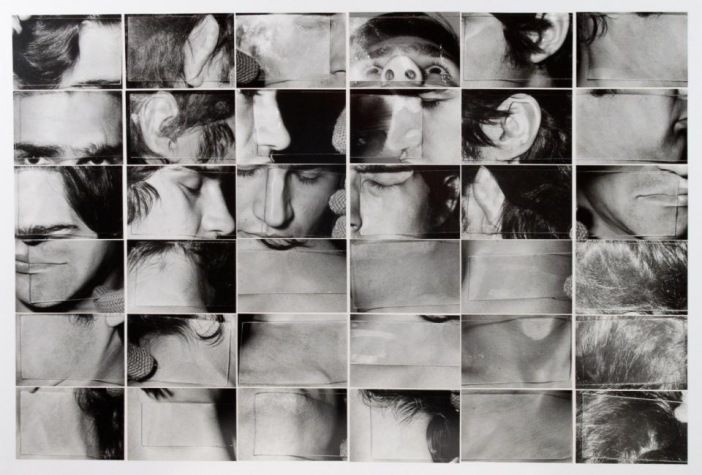Photography in Arte Povera
04 May 2015 - 10 Jan 2016

Giuseppe Penone
To Unroll One’s Skin 1970 (detail of panel 1/18)
648 photographs, gelatin silver print on paper, mounted onto 18 panels, each: 535 x 735 x 25 mm
Presented by Tate Members 2011
© the artist. Image courtesy of Archivio Penone
To Unroll One’s Skin 1970 (detail of panel 1/18)
648 photographs, gelatin silver print on paper, mounted onto 18 panels, each: 535 x 735 x 25 mm
Presented by Tate Members 2011
© the artist. Image courtesy of Archivio Penone
Three works from the late 1960s and early 1970s show different ways in which artists associated with arte povera engaged with photography.
Arte povera is usually considered as a sculptural movement, with artists employing everyday industrial or natural materials rather than traditional fine art ones. But many of the artists associated with arte povera used photography to think about sculptural concerns. They posed questions about the relation of the body to the world around it: how bodies move through space, how bodies are subject to gravity, how the body touches its surroundings. Photography could be utilised as a means to document specific actions or processes. However, for the artists in this room, the camera’s ability to fix and preserve a fleeting moment in time also became an integral element of the artwork.
Giuseppe Penone, whose Tree of 12 Metres appears in the large central gallery of this wing, brings together more than four hundred close-up details of his own body in To Unroll One’s Skin. Arranged in a grid, these images break up and reorder his skin to create a new cartographic landscape. In Gilberto Zorio’s Hatred a sequence of photographs show the artist interacting with a sculptural object that imprints the Italian word Odio (‘Hatred’) onto his forehead. However, the photographic images also manifest a different kind of imprinting of the artist’s presence, just as his bodily measurements are marked out in Terracotta Circle in the central gallery.
Throughout his career, Emilio Prini has engaged intensively with photography and with photographic processes. Here, the photographic print is itself a sculptural material. Spread on the floor and stacked on top of other prints, its thinness and fragility contrast with the weights beside and on top of it.
Curated by Mark Godfrey
Arte povera is usually considered as a sculptural movement, with artists employing everyday industrial or natural materials rather than traditional fine art ones. But many of the artists associated with arte povera used photography to think about sculptural concerns. They posed questions about the relation of the body to the world around it: how bodies move through space, how bodies are subject to gravity, how the body touches its surroundings. Photography could be utilised as a means to document specific actions or processes. However, for the artists in this room, the camera’s ability to fix and preserve a fleeting moment in time also became an integral element of the artwork.
Giuseppe Penone, whose Tree of 12 Metres appears in the large central gallery of this wing, brings together more than four hundred close-up details of his own body in To Unroll One’s Skin. Arranged in a grid, these images break up and reorder his skin to create a new cartographic landscape. In Gilberto Zorio’s Hatred a sequence of photographs show the artist interacting with a sculptural object that imprints the Italian word Odio (‘Hatred’) onto his forehead. However, the photographic images also manifest a different kind of imprinting of the artist’s presence, just as his bodily measurements are marked out in Terracotta Circle in the central gallery.
Throughout his career, Emilio Prini has engaged intensively with photography and with photographic processes. Here, the photographic print is itself a sculptural material. Spread on the floor and stacked on top of other prints, its thinness and fragility contrast with the weights beside and on top of it.
Curated by Mark Godfrey
